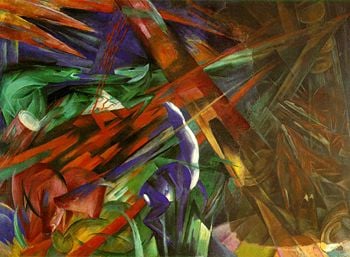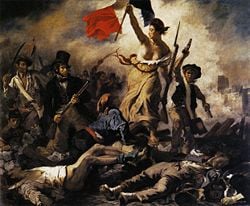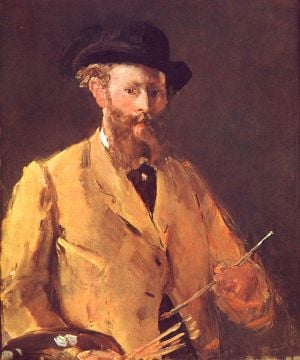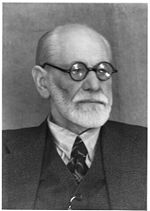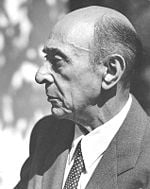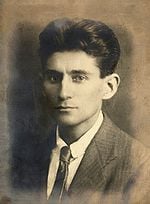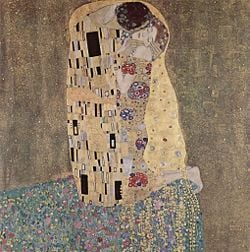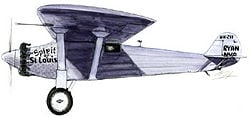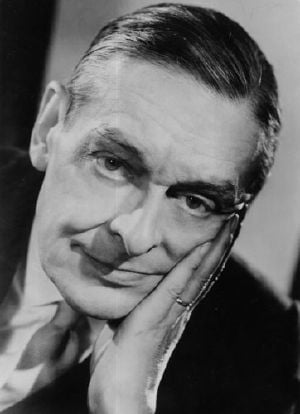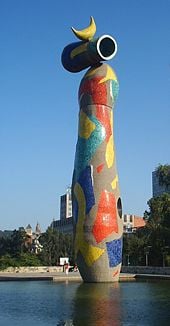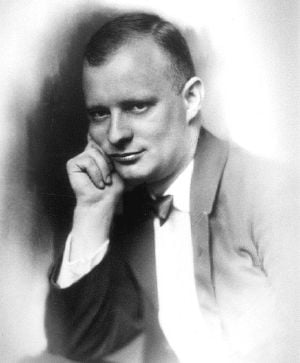Modernism
Modernism, here limited to aesthetic modernism (see also modernity), describes a series of sometimes radical movements in art, architecture, photography, music, literature, and the applied arts which emerged in the three decades before 1914. Modernism has philosophical antecedents that can be traced to the eighteenth-century Enlightenment but is rooted in the changes in Western society at the end of the nineteenth and beginning of the twentieth centuries.
Modernism encompasses the works of artists who rebelled against nineteenth-century academic and historicist traditions, believing that earlier aesthetic conventions were becoming outdated. Modernist movements, such as Cubism in the arts, Atonality in music, and Symbolism in poetry, directly and indirectly explored the new economic, social, and political aspects of an emerging fully industrialized world.
Modernist art reflected the deracinated experience of life in which tradition, community, collective identity, and faith were eroding. In the twentieth century, the mechanized mass slaughter of the First World War was a watershed event that fueled modernist distrust of reason and further sundered complacent views of the steady moral improvement of human society and belief in progress.
Initially an avant guarde movement confined to an intellectual minority, modernism achieved mainstream acceptance and exerted a pervasive influence on culture and popular entertainment in the course of the twentieth century. The modernist view of truth as a subjective, often intuitive claim has contributed to the elevation of individualism and moral relativism as guiding personal ethics and contributed to far-reaching transformations regarding the spiritual significance of human life.
Philosophical and historical background
From the 1870s onward, the ideas that history and civilization were inherently progressive and that progress was always good came under increasing attack. Arguments arose that not merely were the values of the artist and those of society different, but that society was antithetical to progress, and could not move forward in its present form. Philosophers called into question the previous optimism.
Two of the most disruptive thinkers of the period were, in biology, Charles Darwin and, in political science, Karl Marx. Darwin's theory of evolution by natural selection undermined religious certainty and the sense of human uniqueness, which had far-reaching implications in the arts. The notion that human beings were driven by the same impulses as "lower animals" proved to be difficult to reconcile with the idea of an ennobling spirituality. Marx seemed to present a political version of the same proposition: that problems with the economic order were not transient, the result of specific wrong doers or temporary conditions, but were fundamentally contradictions within the "capitalist" system. Naturalism in the visual arts and literature reflected a largely materialist notion of human life and society.
Separately, in the arts and letters, two ideas originating in France would have particular impact. The first was Impressionism, a school of painting that initially focused on work done, not in studios, but outdoors (en plein air). Impressionist paintings demonstrated that human beings do not see objects, but instead see light, itself. The second school was Symbolism, marked by a belief that language is expressly symbolic in its nature, and that poetry and writing should follow connections that the sheer sound and texture of the words create.
At the same time, social, political, religious, and economic forces were at work that would become the basis to argue for a radically different kind of art and thinking. In religion, biblical scholars argued that that the biblical writers were not conveying God's literal word, but were strongly influenced by their times, societies, and audiences. Historians and archaeologists further challenged the factual basis of the Bible and differentiated an evidence-based perspective of the past with the worldview of the ancients, including the biblical authors, who uncritically accepted oral and mythological traditions.
Chief among the physical influences on the development of modernism was steam-powered industrialization, which produced buildings that combined art and engineering, and in new industrial materials such as cast iron to produce bridges and skyscrapers—or the Eiffel Tower, which broke all previous limitations on how tall man-made objects could be—resulting in a radically different urban environment.
The possibilities created by scientific examination of subjects, together with the miseries of industrial urban life, brought changes that would shake a European civilization, which had previously regarded itself as having a continuous and progressive line of development from the Renaissance. With the telegraph offering instantaneous communication at a distance, the experience of time itself was altered.
The breadth of the changes can be sensed in how many modern disciplines are described as being "classical" in their pre-twentieth-century form, including physics, economics, and arts such as ballet, theater, or architecture.
The beginning of Modernism: 1890-1910
The roots of Modernism emerged in the middle of the nineteenth century; and rather locally, in France, with Charles Baudelaire in literature and Édouard Manet in painting, and perhaps with Gustave Flaubert, too, in prose fiction. (It was a while later, and not so locally, that Modernism appeared in music and architecture). The "avant-garde" was what Modernism was called at first, and the term remained to describe movements which identify themselves as attempting to overthrow some aspect of tradition or the status quo.
In the 1890s, a strand of thinking began to assert that it was necessary to push aside previous norms entirely, instead of merely revising past knowledge in light of current techniques. The growing movement in art paralleled such developments as Einstein's Theory of Relativity in physics; the increasing integration of the internal combustion engine and industrialization; and the increased role of the social sciences in public policy. It was argued that, if the nature of reality itself was in question, and if restrictions which had been in place around human activity were falling, then art, too, would have to radically change. Thus, in the first 15 years of the twentieth century a series of writers, thinkers, and artists made the break with traditional means of organizing literature, painting, and music.
Sigmund Freud offered a view of subjective states involving an unconscious mind full of primal impulses and counterbalancing self-imposed restrictions, a view that Carl Jung would combine with a belief in natural essence to stipulate a collective unconscious that was full of basic typologies that the conscious mind fought or embraced. Jung's view suggested that people's impulses towards breaking social norms were not the product of childishness or ignorance, but were instead essential to the nature of the human animal, the ideas of Darwin having already introduced the concept of "man, the animal" to the public mind.
Friedrich Nietzsche championed a philosophy in which forces, specifically the 'Will to power', were more important than facts or things. Similarly, the writings of Henri Bergson championed the vital "life force" over static conceptions of reality. What united all these writers was a romantic distrust of the Victorian positivism and certainty. Instead they championed, or, in the case of Freud, attempted to explain, irrational thought processes through the lens of rationality and holism. This was connected with the century-long trend to thinking in terms of holistic ideas, which would include an increased interest in the occult, and "the vital force."
Out of this collision of ideals derived from Romanticism, and an attempt to find a way for knowledge to explain that which was as yet unknown, came the first wave of works, which, while their authors considered them extensions of existing trends in art, broke the implicit contract that artists were the interpreters and representatives of bourgeois culture and ideas. These "modernist" landmarks include Arnold Schoenberg's atonal ending to his Second String Quartet in 1908; the Abstract-Expressionist paintings of Wassily Kandinsky starting in 1903 and culminating with the founding of the Blue Rider group in Munich; and the rise of Cubism from the work of Picasso and Georges Braque in 1908.
Powerfully influential in this wave of modernity were the theories of Freud, who argued that the mind had a basic and fundamental structure, and that subjective experience was based on the interplay of the parts of the mind. All subjective reality was based, according to Freud's ideas, on the play of basic drives and instincts, through which the outside world was perceived. This represented a break with the past, in that previously it was believed that external and absolute reality could impress itself on an individual, as, for example, in John Locke's tabula rasa doctrine.
This wave of the Modern Movement broke with the past in the first decade of the twentieth century, and tried to redefine various art forms in a radical manner. Leading lights within the literary wing of this trend included Basil Bunting, Jean Cocteau, Joseph Conrad, T. S. Eliot, William Faulkner, Max Jacob, James Joyce, Franz Kafka, D. H. Lawrence, Federico García Lorca, Marianne Moore, Ezra Pound, Marcel Proust, Gertrude Stein, Wallace Stevens, Virginia Woolf, and W. B. Yeats among others.
Composers such as Schoenberg, Stravinsky, and George Antheil represent Modernism in music. Artists such as Gustav Klimt, Picasso, Matisse, Mondrian, and the movements Les Fauves, Cubism and the Surrealists represent various strains of Modernism in the visual arts, while architects and designers such as Le Corbusier, Walter Gropius, and Mies van der Rohe brought modernist ideas into everyday urban life. Several figures outside of artistic Modernism were influenced by artistic ideas; for example, John Maynard Keynes was friends with Woolf and other writers of the Bloomsbury group.
The explosion of Modernism: 1910-1930
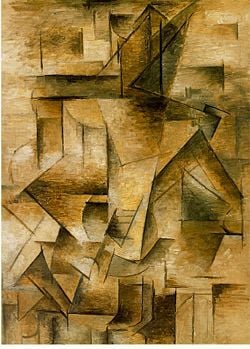
On the eve of World War I a growing tension and unease with the social order, seen in the Russian Revolution of 1905 and the agitation of "radical" parties, also manifested itself in artistic works in every medium which radically simplified or rejected previous practice. In 1913, famed Russian composer Igor Stravinsky, working for Sergei Diaghilev and the Ballets Russes, composed Rite of Spring for a ballet, choreographed by Vaslav Nijinsky that depicted human sacrifice, and young painters such as Pablo Picasso and Henri Matisse were causing a shock with their rejection of traditional perspective as the means of structuring paintings—a step that none of the Impressionists, not even Cézanne, had taken.
These developments began to give a new meaning to what was termed 'Modernism'. It embraced disruption, rejecting or moving beyond simple Realism in literature and art, and rejecting or dramatically altering tonality in music. This set Modernists apart from nineteenth-century artists, who had tended to believe in "progress." Writers like Dickens and Tolstoy, painters like Turner, and musicians like Brahms were not 'radicals' or 'Bohemians', but were instead valued members of society who produced art that added to society, even if it was, at times, critiquing less desirable aspects of it. Modernism, while it was still "progressive" increasingly saw traditional forms and traditional social arrangements as hindering progress, and therefore the artist was recast as a revolutionary, overthrowing rather than enlightening.
Futurism exemplifies this trend. In 1909, F.T. Marinetti's first manifesto was published in the Parisian newspaper Le Figaro; soon afterward a group of painters (Giacomo Balla, Umberto Boccioni, Carlo Carrà, Luigi Russolo, and Gino Severini) co-signed the Futurist Manifesto. Modeled on the famous "Communist Manifesto" of the previous century, such manifestos put forward ideas that were meant to provoke and to gather followers. Strongly influenced by Bergson and Nietzsche, Futurism was part of the general trend of Modernist rationalization of disruption.
Modernist philosophy and art were still viewed as being only a part of the larger social movement. Artists such as Klimt and Cézanne, and composers such as Mahler and Richard Strauss were "the terrible moderns"—other radical avant-garde artists were more heard of than heard. Polemics in favor of geometric or purely abstract painting were largely confined to 'little magazines' (like The New Age in the United Kingdom) with tiny circulations. Modernist primitivism and pessimism were controversial but were not seen as representative of the Edwardian mainstream, which was more inclined towards a Victorian faith in progress and liberal optimism.
However, World War I and its subsequent events were the cataclysmic upheavals that late nineteenth-century artists such as Brahms had worried about, and avant-gardists had anticipated. First, the failure of the previous status quo seemed self-evident to a generation that had seen millions die fighting over scraps of earth—prior to the war, it had been argued that no one would fight such a war, since the cost was too high. Second, the birth of a machine age changed the conditions of life—machine warfare became a touchstone of the ultimate reality. Finally, the immensely traumatic nature of the experience dashed basic assumptions: Realism seemed to be bankrupt when faced with the fundamentally fantastic nature of trench warfare, as exemplified by books such as Erich Maria Remarque's All Quiet on the Western Front. Moreover, the view that mankind was making slow and steady moral progress came to seem ridiculous in the face of the senseless slaughter of the Great War. The First World War at once fused the harshly mechanical geometric rationality of technology with the nightmarish irrationality of myth.
Thus in the 1920s, Modernism, which had been a minority taste before the war, came to define the age. Modernism was seen in Europe in such critical movements as Dada, and then in constructive movements such as Surrealism, as well as in smaller movements of the Bloomsbury Group. Each of these "modernisms," as some observers labeled them at the time, stressed new methods to produce new results. Again, Impressionism was a precursor: breaking with the idea of national schools, artists and writers and adopting ideas of international movements. Surrealism, Cubism, Bauhaus, and Leninism are all examples of movements that rapidly found adherents far beyond their original geographic base.
Exhibitions, theater, cinema, books, and buildings all served to cement in the public view the perception that the world was changing. Hostile reaction often followed, as paintings were spat upon, riots organized at the opening of works, and political figures denounced modernism as unwholesome and immoral. At the same time, the 1920s were known as the "Jazz Age," and the public showed considerable enthusiasm for cars, air travel, the telephone, and other technological advances.
By 1930, Modernism had won a place in the establishment, including the political and artistic establishment, although by this time Modernism itself had changed. There was a general reaction in the 1920s against the pre-1918 Modernism, which emphasized its continuity with a past while rebelling against it, and against the aspects of that period which seemed excessively mannered, irrational, and emotional. The post-World-War period, at first, veered either to systematization or nihilism and had, as perhaps its most paradigmatic movement, Dada.
While some writers attacked the madness of the new Modernism, others described it as soulless and mechanistic. Among Modernists there were disputes about the importance of the public, the relationship of art to audience, and the role of art in society. Modernism comprised a series of sometimes-contradictory responses to the situation as it was understood, and the attempt to wrestle universal principles from it. In the end science and scientific rationality, often taking models from the eighteenth century Enlightenment, came to be seen as the source of logic and stability, while the basic primitive sexual and unconscious drives, along with the seemingly counter-intuitive workings of the new machine age, were taken as the basic emotional substance. From these two poles, no matter how seemingly incompatible, Modernists began to fashion a complete worldview that could encompass every aspect of life, and express "everything from a scream to a chuckle."
Modernism's second generation: 1930-1945
By 1930, Modernism had entered popular culture. With the increasing urbanization of populations, it was beginning to be looked to as the source for ideas to deal with the challenges of the day. As Modernism gained traction in academia, it was developing a self-conscious theory of its own importance. Popular culture, which was not derived from high culture but instead from its own realities (particularly mass production), fueled much Modernist innovation. Modern ideas in art appeared in commercials and logos, the famous London Underground logo being an early example of the need for clear, easily recognizable and memorable visual symbols.
Another strong influence at this time was Marxism. After the generally primitivistic/irrationalist aspect of pre-World-War-One Modernism, which for many Modernists precluded any attachment to merely political solutions, and the Neo-Classicism of the 1920s, as represented most famously by T. S. Eliot and Igor Stravinsky—which rejected popular solutions to modern problems—the rise of Fascism, the Great Depression, and the march to war helped to radicalize a generation. The Russian Revolution was the catalyst to fuse political radicalism and utopianism with more expressly political stances. Bertolt Brecht, W. H. Auden, Andre Breton, Louis Aragon, and the philosophers Gramsci and Walter Benjamin are perhaps the most famous exemplars of this Modernist Marxism. This move to the radical left, however, was neither universal nor definitional, and there is no particular reason to associate Modernism, fundamentally, with 'the left'. Modernists explicitly of "the right" include Wyndham Lewis, William Butler Yeats, T. S. Eliot, Ezra Pound, the Dutch author Menno ter Braak, and many others.
One of the most visible changes of this period is the adoption of objects of modern production into daily life. Electricity, the telephone, the automobile—and the need to work with them, repair them, and live with them—created the need for new forms of manners, and social life. The kind of disruptive moment which only a few knew in the 1880s became a common occurrence as telecommunications became increasingly ubiquitous. The speed of communication reserved for the stockbrokers of 1890 became part of family life.
Modernism in social organization would produce inquiries into sex and the basic bondings of the nuclear, rather than extended, family. The Freudian tensions of infantile sexuality and the raising of children became more intense, because people had fewer children, and therefore a more specific relationship with each child: the theoretical, again, became the practical and even popular. In the arts as well as popular culture sexuality lost its mooring to marriage and family and increasingly came to be regarded as a self-oriented biological imperative. Explicit depictions of sex in literature, theater, film, and other visual arts often denigrated traditional or religious conceptions of sex and the implicit relationship between sex and procreation.
Modernism's goals
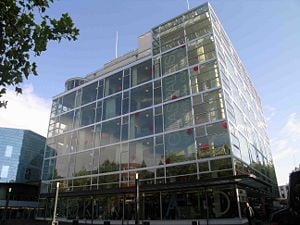
Many modernists believed that by rejecting tradition they could discover radically new ways of making art. Arnold Schoenberg believed that by rejecting traditional tonal harmony, the hierarchical system of organizing works of music which had guided music-making for at least a century and a half, and perhaps longer, he had discovered a wholly new way of organizing sound, based on the use of 12-note rows. This led to what is known as serial music by the post-war period.
Abstract artists, taking as their examples from the Impressionists, as well as Paul Cézanne and Edvard Munch, began with the assumption that color and shape formed the essential characteristics of art, not the depiction of the natural world. Wassily Kandinsky, Piet Mondrian, and Kazimir Malevich all believed in redefining art as the arrangement of pure color. The use of photography, which had rendered much of the representational function of visual art obsolete, strongly affected this aspect of Modernism. However, these artists also believed that by rejecting the depiction of material objects they helped art move from a materialist to a spiritualist phase of development.
Other Modernists, especially those involved in design, had more pragmatic views. Modernist architects and designers believed that new technology rendered old styles of building obsolete. Le Corbusier thought that buildings should function as "machines for living in," analogous to cars, which he saw as machines for traveling in. Just as cars had replaced the horse, so Modernist design should reject the old styles and structures inherited from Ancient Greece or from the Middle Ages. Following this machine aesthetic, Modernist designers typically reject decorative motifs in design, preferring to emphasize the materials used and pure geometrical forms. The skyscraper, such as Ludwig Mies van der Rohe's Seagram Building in New York (1956–1958), became the archetypal Modernist building.
Modernist design of houses and furniture also typically emphasized simplicity and clarity of form, open-plan interiors, and the absence of clutter. Modernism reversed the nineteenth-century relationship of public and private: in the nineteenth century, public buildings were horizontally expansive for a variety of technical reasons, and private buildings emphasized verticality—to fit more private space on more and more limited land.
In other arts, such pragmatic considerations were less important. In literature and visual art, some Modernists sought to defy expectations mainly in order to make their art more vivid, or to force the audience to take the trouble to question their own preconceptions. This aspect of Modernism has often seemed a reaction to consumer culture, which developed in Europe and North America in the late-nineteenth century. Whereas most manufacturers try to make products that will be marketable by appealing to preferences and prejudices, High Modernists rejected such consumerist attitudes in order to undermine conventional thinking.
Many Modernists saw themselves as apolitical. Others, such as T. S. Eliot, rejected mass popular culture from a conservative position. Indeed, one could argue that Modernism in literature and art functioned to sustain an elite culture which excluded the majority of the population.
Modernism's reception and controversy
The most controversial aspect of the Modern movement was, and remains, its rejection of tradition. Modernism's stress on freedom of expression, experimentation, radicalism, and primitivism disregards conventional expectations. In many art forms this often meant startling and alienating audiences with bizarre and unpredictable effects: the strange and disturbing combinations of motifs in Surrealism, the use of extreme dissonance and atonality in Modernist music, and depictions of nonconventional sexuality in many media. In literature Modernism often involved the rejection of intelligible plots or characterization in novels, or the creation of poetry that defied clear interpretation.
The Soviet Communist government rejected Modernism after the rise of Stalin on the grounds of alleged elitism, although it had previously endorsed Futurism and Constructivism; and the Nazi government in Germany deemed it narcissistic and nonsensical, as well as "Jewish" and "Negro." The Nazis exhibited Modernist paintings alongside works by the mentally ill in an exhibition entitled Degenerate art.
Modernism flourished mainly in consumer/capitalist societies, despite the fact that its proponents often rejected consumerism itself. However, High Modernism began to merge with consumer culture after World War II, especially during the 1960s. In Britain, a youth sub-culture even called itself "moderns," though usually shortened to Mods, following such representative music groups as The Who and The Kinks. Bob Dylan, The Rolling Stones, and Pink Floyd combined popular musical traditions with Modernist verse, adopting literary devices derived from Eliot, Apollinaire, and others. The Beatles developed along similar lines, creating various Modernist musical effects on several albums, while musicians such as Frank Zappa, Syd Barrett, and Captain Beefheart proved even more experimental. Modernist devices also started to appear in popular cinema, and later on in music videos. Modernist design also began to enter the mainstream of popular culture, as simplified and stylized forms became popular, often associated with dreams of a space age high-tech future.
This merging of consumer and high versions of Modernist culture led to a radical transformation of the meaning of "modernism." Firstly, it implied that a movement based on the rejection of tradition had become a tradition of its own. Secondly, it demonstrated that the distinction between elite Modernist and mass-consumerist culture had lost its precision. Some writers declared that Modernism had become so institutionalized that it was now "post avant-garde," indicating that it had lost its power as a revolutionary movement. Many have interpreted this transformation as the beginning of the phase that became known as Post-Modernism. For others, such as, for example, art critic Robert Hughes, Post-Modernism represents an extension of Modernism.
"Anti-Modern" or "counter-Modern" movements seek to emphasize holism, connection, and spirituality as being remedies or antidotes to Modernism. Such movements see Modernism as reductionist, and therefore subject to the failure to see systemic and emergent effects. Many Modernists came to this viewpoint; for example, Paul Hindemith in his late turn towards mysticism. Writers such as Paul H. Ray and Sherry Ruth Anderson, in The Cultural Creatives, Fredrick Turner in A Culture of Hope, and Lester Brown in Plan B, have articulated a critique of the basic idea of Modernism itself—that individual creative expression should conform to the realities of technology. Instead, they argue, individual creativity should make everyday life more emotionally acceptable.
In some fields, the effects of Modernism have remained stronger and more persistent than in others. Visual art has made the most complete break with its past. Most major capital cities have museums devoted to 'Modern Art' as distinct from post-Renaissance art (circa 1400 to circa 1900). Examples include the Museum of Modern Art in New York, the Tate Modern in London, and the Centre Pompidou in Paris. These galleries make no distinction between Modernist and Post-Modernist phases, seeing both as developments within 'Modern Art.'
ReferencesISBN links support NWE through referral fees
- Bradbury, Malcolm, and James McFarlane (eds.). Modernism: A Guide to European Literature 1890–1930. Penguin, 1978. ISBN 0140138323
- Hughes, Robert. The Shock of the New: Art and the Century of Change. Gardners Books, 1991. ISBN 0500275823
- Levenson, Michael (ed.). The Cambridge Companion to Modernism. Cambridge University Press, 1999. ISBN 052149866X
- Pevsner, Nikolaus. Pioneers of Modern Design: From William Morris to Walter Gropius. Yale University Press, 2005. ISBN 0300105711
- Pevsner, Nikolaus. The Sources of Modern Architecture and Design, Thames & Hudson, 1985. ISBN 0500200726
- Weston, Richard. Modernism. Phaidon Press, 2001. ISBN 0714840998
Credits
New World Encyclopedia writers and editors rewrote and completed the Wikipedia article in accordance with New World Encyclopedia standards. This article abides by terms of the Creative Commons CC-by-sa 3.0 License (CC-by-sa), which may be used and disseminated with proper attribution. Credit is due under the terms of this license that can reference both the New World Encyclopedia contributors and the selfless volunteer contributors of the Wikimedia Foundation. To cite this article click here for a list of acceptable citing formats.The history of earlier contributions by wikipedians is accessible to researchers here:
The history of this article since it was imported to New World Encyclopedia:
Note: Some restrictions may apply to use of individual images which are separately licensed.
